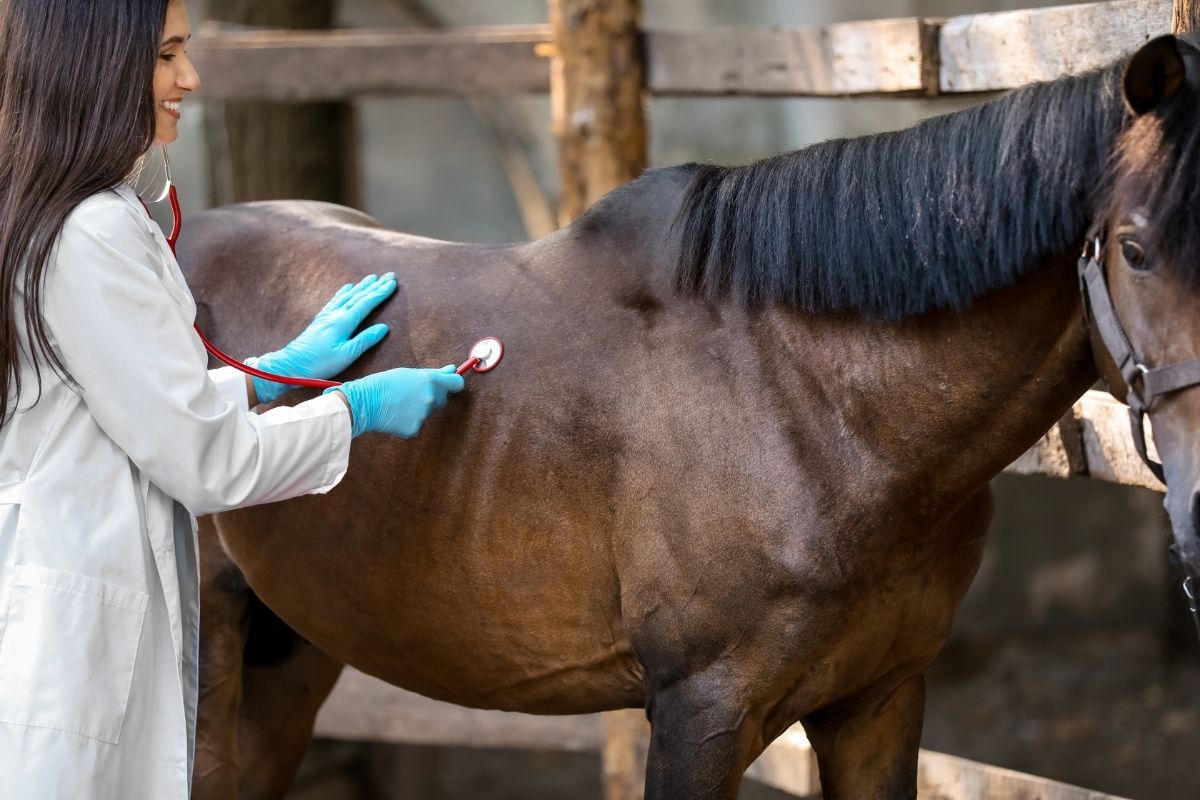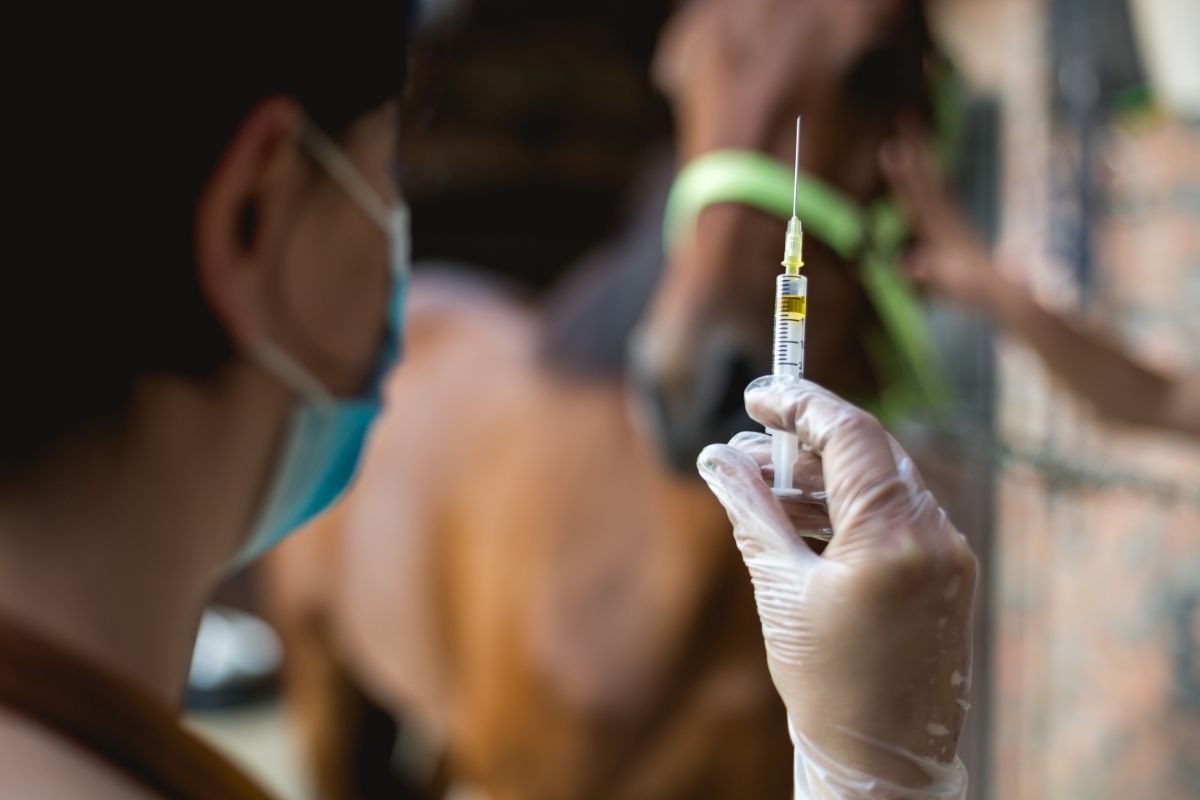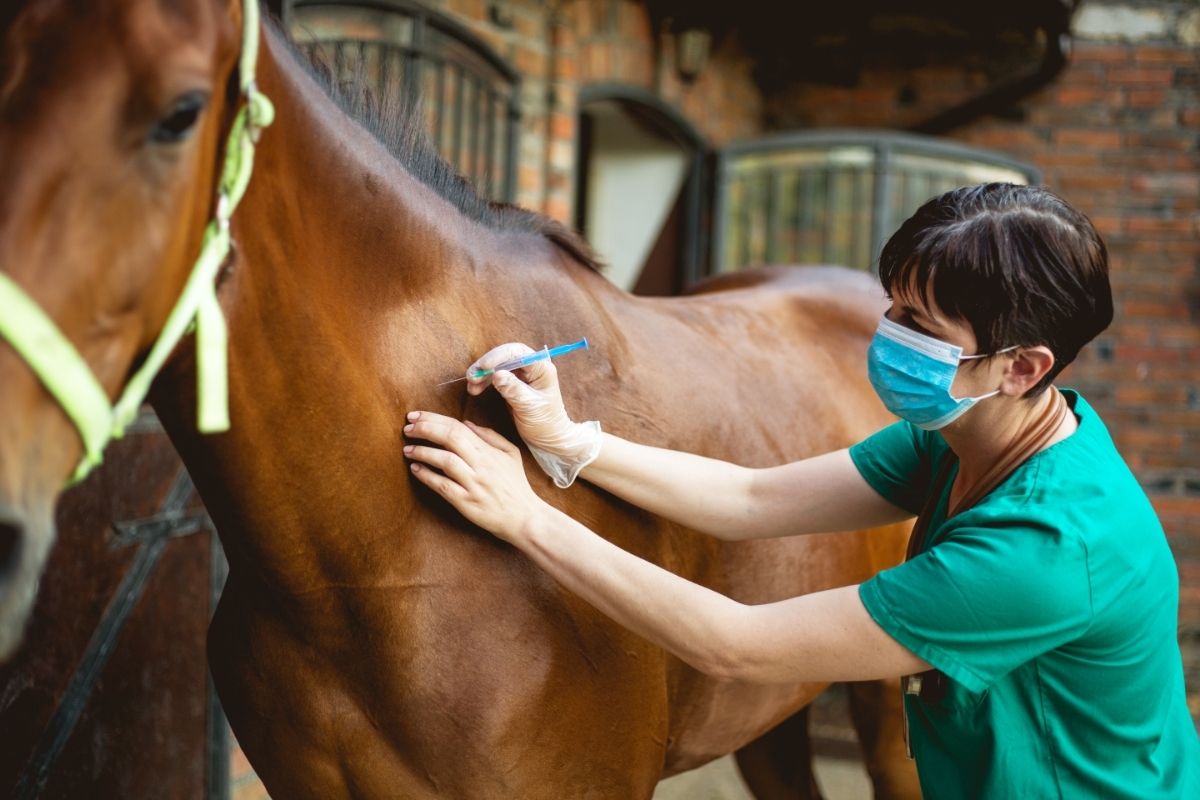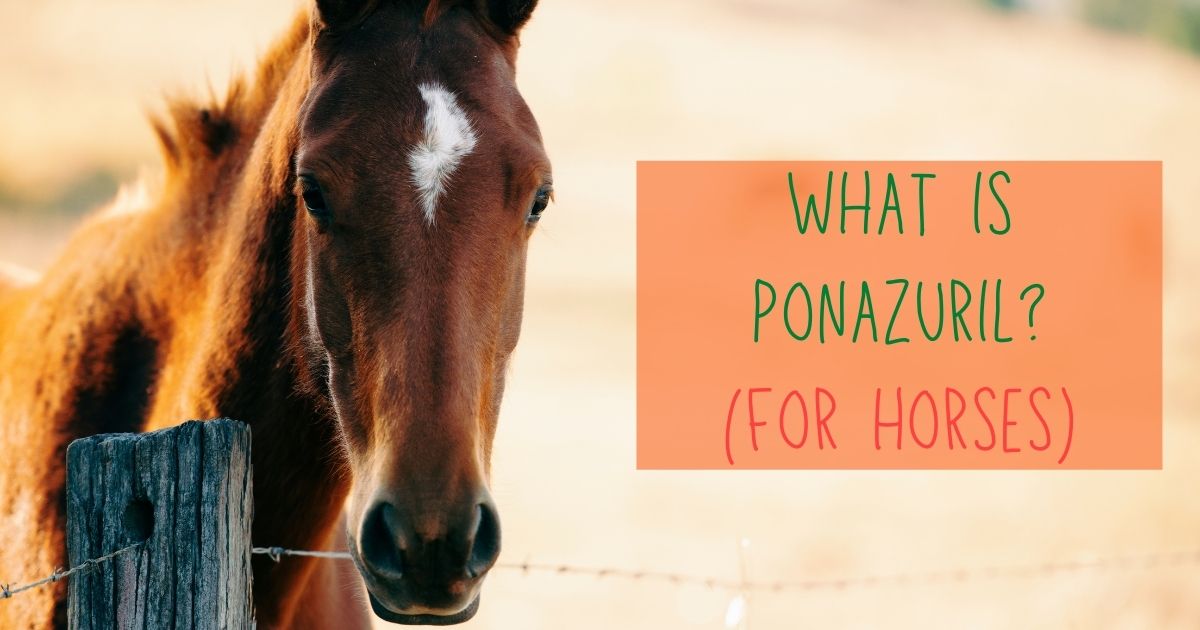What is Ponazuril for Horses?
Ponazuril for horses was the first medication for equine protozoal myeloencephalitis to receive licensing from the FDA. It kills protozoal parasites, including Sarcocystis neurona, which causes equine protozoal myeloencephalitis.
Ponazuril is a successful treatment for equine protozoal myeloencephalitis because it passes the blood-brain barrier, allowing it to reach adequate levels in the central nervous system and destroy the disease-causing parasite migrating through the spinal cord.

What Are the Therapeutic Goals of Ponazuril?
- The elimination of protozoal parasites.
- To control and decrease inflammation in the central nervous system.
- Provision of supportive care until the horse’s neurologic function improves.
What is EPM in Horses?
Equine protozoal myeloencephalitis (EPM) is a neurological illness of horses. The term equine refers to the horse, protozoal to the disease-causing organism, and myeloencephalitis to the affected area of the animal. “Myelo” means spinal cord, and “encephalitis” means brain infection/inflammation.
So, EPM is a disease of the horse’s brain and spinal cord caused by protozoa, the tiniest organism with single cells. Sarcocystis neurona is the organism that causes EPM. Segmental myelitis was first out in the 1960s.
In 1974, we discovered protozoa caused the sickness. In 1976, a Sarcocystis organism was to blame. Sarcocystis neurona was initially isolated from the spinal cord of an EPM horse in the early 1990s.
This organism is widespread in the US but causes EPM less frequently than S. neurona. EPM is a disease that you can mostly find in the Western Hemisphere. This disease affects horses from North or South America or horses that have lived in the Americas. Fortunately, only a tiny minority of horses seropositive for either parasite develop EPM.
It is difficult to assess the disease rate. The USDA estimated the illness incidence in the overall equine population, excluding racehorses, to be 0.14 percent in the 1990s. This finding supports the idea that while exposing most equines to parasites, only a small percentage acquire the clinical disease.
We can learn about S. neurona’s life cycle in recent years. Sarcocystis neurona lives in two hosts. We have a definitive host and numerous intermediary hosts. The final host is an animal that excretes an infective form of the parasite.
The intermediate host is an animal that does not shed infective forms, but the parasite requires it to complete its life cycle. The opossum was the parasite’s sole host in 1995. (there may be other definitive hosts for this organism, and we have just not yet identified them).
The opossum excretes the infective form of the parasite, called a “sporocyst.” The horse then eats the sporocyst. We don’t know what happens next once inside the horse. The parasite goes through the maturation of the reproductive phase, producing what we call “merozoites.” The merozoites eventually reach the CNS, causing damage and the disorder known as EPM.
Intermediate hosts include skunks, armadillos, raccoons, cats, and sea otters. Our knowledge of this protozoan parasite will surely grow. We call the horse an aberrant, intermediate host because it is not a “normal” host for this parasite. In rare cases, the horse might act as a natural intermediate host for this parasite.
How Does EPM Look?
Because EPM affects the central nervous system (brain and spinal cord), the disease’s symptoms and severity can vary greatly. However, EPM can impact the brain and spinal cord. It is more typical for signs to be associated with spinal cord damage, though brain damage does occur.
This disease’s three hallmarks are asymmetry, ataxia, and atrophy.
- Asymmetry: describes a worse sickness on one side of the body than the other. In other words, with EPM, the left side is often worse than the right.
- Ataxia: is the inability of the horse to coordinate its legs and trunk, resulting in incoordination.
- Atrophy: occurs when muscles diminish from their standard size. Damage to the nerves that typically governor “innervate” these muscles causes EPM. Muscle atrophy is not as common as asymmetrical ataxia in EPM.
This condition causes incoordination in horses, which is usually worse on one side of the body than the other. Muscle atrophy may occur in these horses. Muscle weakness is also typical in these horses. Anomalies of gait, lameness, and lack of sensation in the face, neck, and body may be eyes, ears, or lips may droop due to paralysis of the ocular, facial, or mouth muscles.
An unbalanced horse may also have trouble eating or vocalizing. Rarely do seizures and collapse occurs. It might proceed quickly or slowly. Horses usually decline over time, but some animals may “level off” or plateau for days, weeks, or months. Most horses with this terrible condition are bright and alert.
How Do We Spot EPM?
As stated previously, the clinical indications of this condition vary greatly, and no two horses with EPM will appear the same. That’s one of the reasons precise identification of this disease is difficult. Also, various disorders of the horse’s central nervous system can seem similar to EPM, especially in the early phases of the disease process.
Finally, no single “test” can accurately diagnose EPM in a living horse. Your veterinarian can employ tests to confirm the diagnosis of EPM and rule out other disorders that may appear like EPM. Remember that we can never be 100% certain a horse has EPM.
The neurologic exam is the first step in your veterinarian’s diagnosis of EPM. This is a specific evaluation to assess the horse’s nervous system. It may also be essential to take radiographs of the horse’s neck to see if the spine has a condition that could compress the spinal cord.
Pressure on the horse’s spinal cord can cause clinical indications similar to EPM. The most general term for this ailment is “wobblers.” This is an important “rule out” for EPM. During the exam, your vet may take blood. You may use a spinal tap to obtain spinal fluid from the horse in some situations.
The most accurate EPM diagnostics now available require blood and spinal fluid tests. Blood and spinal fluid tests confirm EPM diagnosis and rule out other CNS illnesses.
EPM is a problematic diagnosis to determine, and in some circumstances, you may require treatment of the horse. That is, you can treat EPM with minimal diagnostic effort. If the horse improves, then it has EPM.
If the horse doesn’t improve, more testing may be required. You should only choose this option after a thorough discussion with your vet. With guidance from your vet, you may use the marquis treatment for EMP.
What Can I Do to Reduce or Eliminate the Risk of EPM?
Horse owners can assist limit the risk variables that can contribute to disease occurrence by following some basic husbandry measures and using common sense.
- One thing we can all do is maintain our feed storage spaces clean and tidy. Untidy locations with spilled feed attract unwelcome visitors like opossums.
- The feed should be kept in tightly sealed or closed containers.
- If at all feasible, cover your hay storage space.
- Maintain rodent control on your premises.
- You should avoid opossum visits.
- Check with your local authorities about trapping, relocating, or removing opossums.
- You should dispose of any animal carcasses you may find on or near your property.
- Maintain the cleanliness of your horse water sources regularly.
- Feeding on the ground is not a good idea.
- Make horses as comfortable as possible when transporting them. Transportation stress is a factor that can contribute to EPM.
There are currently no USDA-approved vaccinations for horses to help prevent this condition.

Precautions to Take With Ponazuril for Horses
Although marquis ponazuril “effectively clears the horse of S. neurona,” the manufacturer warns that it “may not affect irreversible, pre-existing central nervous system damage produced by the protozoal parasite before treatment.”
After therapy, horses’ relapse is a common problem, and clinicians disagree on effectively treating these horses. Many veterinarians urge that patients receive treatment for at least 56 days rather than the standard 28 days.
Ponazuril is a prescription medicine licensed for horses. This medicine is only available from a licensed veterinarian’s written or oral order in the United States. Any drug-free competition would outlaw ponazuril. It’s crucial to double-check with each regulatory body.
Marquis for Horses Potential Side Effects
We can summarize the marquis for horse wormer side effects as:
- Blisters on the nose and mouth for up to 18 days.
- Skin rash or hives for up to 18 days.
- Loose stools throughout the treatment period.
- Minor colic.
- Convulsions.
How to Administer Marquis Horse Wormer
Before administering marquis dewormer, you should assemble the syringe barrel and plunger before administration. Make sure the plunger is clean and dry before using it.
Step 1
Remove the end cap and gently press down on the plunger until marquis oral paste appears at the syringe barrel’s tip. Return the end cap to the paste syringe’s tip.
Step 2
Determine the horse’s weight and ensure no feed in the horse’s mouth.
Step 3
Ensure the dosage ring collar and barrel collar are flush when measuring the dose. Hold the plunger and the other, rotate the dose ring to the horse’s weight with one hand.
Step 4
Remove the syringe barrel’s end cap.
Step 5
Apply the paste to the back and top of the horse’s tongue in the desired dosage. In the gap between the front (incisor) and back (molar) teeth, insert the tip of the paste syringe into the side of the horse’s mouth. Depress the syringe plunger as far as the dosing ring allows to place the paste on the horse’s mouth. Remove the syringe’s tip from the horse’s mouth.
Step 6
After dosing the paste, quickly raise the horse’s head for a few seconds to help swallow.
Step 7
Wipe the syringe tip clean with a clean disposable cloth and replace the end cap on the syringe barrel.
Step 8
Repeat steps one to seven for the next daily dose.
Can Humans Take Ponazuril for Horses?
Only for use in animals. Use only in horses that are not for human consumption. Not for human consumption. Keep out of children’s reach.
Are There Any Drug Interactions With Marquis Equine Paste?
There is no drug literature about drug interactions with marquis equine medicine.

The Final Neigh
From our discussion, it is clear that ponazuril is the best medication for equine protozoal myeloencephalitis. This is a disease that you should always watch out for.
Be very keen and look out for the symptoms in this article. Above all, follow the preventive measures to keep your horse safe from equine protozoal myeloencephalitis. It can be very uncomfortable for your horse.
